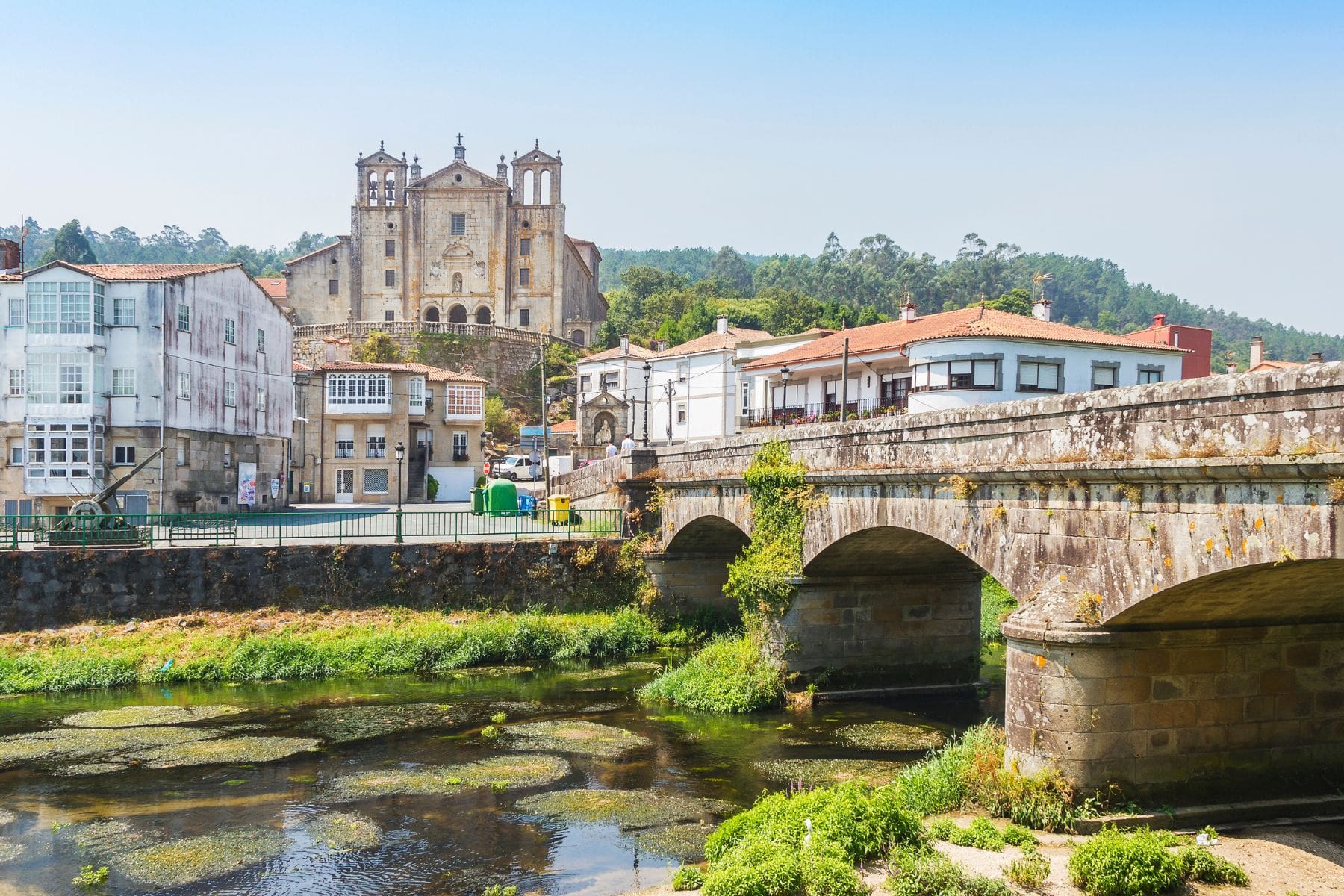Tracing Galicia’s Sacred Paths on the Portuguese Coastal Way
Stage 10 of the Portuguese Coastal Way invites pilgrims to step deeper into Galicia’s serene beauty and spiritual legacy. This 19-kilometer stretch from Caldas de Reis to Padrón meanders through forested trails, traditional villages, and the peaceful banks of the River Sar. Along this journey, pilgrims walk in the footsteps of centuries of devotion, surrounded by the rhythms of rural life.
Whether you’re walking for faith, connection with nature, or self-discovery, this segment of the Portuguese Camino offers reflection and renewal.
Stage Overview: Calda de Reis to Padrón
- Distance: 19 kilometers / 11.8 miles
- Estimated Time: 4 to 5 hours
- Difficulty: Easy to Moderate
- Landscape: Forest paths, vineyards, rural villages, agricultural plains
- Main Stops: Valga, Herbón Monastery (optional), Padrón
- Must-Bring Items: Rain gear, small bag, local guidebook or brochure
Tracing Galicia’s Sacred Paths on the Portuguese Coastal Way
Stage 10 of the Portuguese Coastal Way invites pilgrims to step deeper into Galicia’s serene beauty and spiritual legacy. This 19-kilometer stretch from Caldas de Reis to Padrón meanders through forested trails, traditional villages, and the peaceful banks of the River Sar. Along this journey, pilgrims walk in the footsteps of centuries of devotion, surrounded by the rhythms of rural life.
Whether you’re walking for faith, connection with nature, or self-discovery, this segment of the Portuguese Camino offers reflection and renewal.
What to Expect Along the Route
Departing Caldas de Reis
Begin the day in Caldas de Reis, known for its healing thermal springs. The trail soon leads into peaceful wooded areas, with the cool sounds of streams and shaded canopies welcoming you into the quiet countryside.
Valga: A Step Back in Time
The first main stop is Valga, a tranquil Galician village where traditional stone homes and rural charm invite pilgrims to pause and reconnect. This is a great place for a light break and coffee.
Optional Detour: Herbón Monastery
For those interested in deepening their cultural experience, consider a short detour to the Monastery of San Antonio de Herbón. Home to the famed Padrón peppers, this Franciscan monastery is surrounded by orchards and gardens. It’s a peaceful space to reflect and learn about the monastic influence on Galician agriculture.
Arrival in Padrón: Where Legend Meets the Camino
The final destination, Padrón, is a town steeped in spiritual significance. According to tradition, this is where the body of Saint James arrived by boat.
Must-See Landmarks:
- Church of Santiago: Houses the revered Pedrón stone, under the main altar.
- River Sar Walk: A scenic riverside stroll ideal for contemplation.
- Local Markets: Don’t miss the chance to try freshly grilled Padrón peppers.
Accommodation and Dining Tips
Where to Stay in Padrón
- Albergue de Padrón: Friendly, budget-conscious option tailored to pilgrims.
- Hotel Chef Rivera: Known for comfort, warm hospitality, and excellent food.
Where to Eat
- Valga: Local cafés offer light snacks and coffee, ideal for a quick rest.
- Padrón:
- Pulpería Rial: Famous for its octopus and authentic Galician dishes.
- O Secreto: A more refined dining spot with creative local cuisine
Essentials to Pack
- Rain Jacket or Poncho: Galicia’s weather is unpredictable.
- Small Bag or Container: For Padrón peppers if visiting Herbón.
- Local Guidebook: Useful for understanding landmarks and historical context.
FAQ: Answering Common Pilgrim Questions
Is this stage difficult?
No. The route features gentle terrain, ideal for most fitness levels and suitable for pilgrims seeking a relaxed pace.
Is the Herbón Monastery worth the detour?
Yes, especially for those interested in cultural history or gastronomy. It adds depth to your experience without extending the route significantly.
What time should I begin?
Set out early to enjoy the cooler part of the day and allow time for stops in Valga or Herbón.
Are there public transportation options from Padrón?
Yes. Padrón is well-connected by bus and train for those needing to adjust their plans.
Stories and Stillness: Reflections from the Trail
Stage 10 is less about challenge and more about connection. Pilgrims often describe this stretch of the Portuguese Camino as a day of inner peace. Whether stopping to speak with a local farmer, wandering through a monastery garden, or meditating beside the River Sar, this is a stage where the Camino speaks softly but powerfully.
Ready for What Comes Next?
You’re nearly there. As you rest in Padrón, excitement grows for the final stage. Don’t miss our complete guide to Stage 11: Padrón to Santiago de Compostela, where your pilgrimage reaches its sacred destination.






